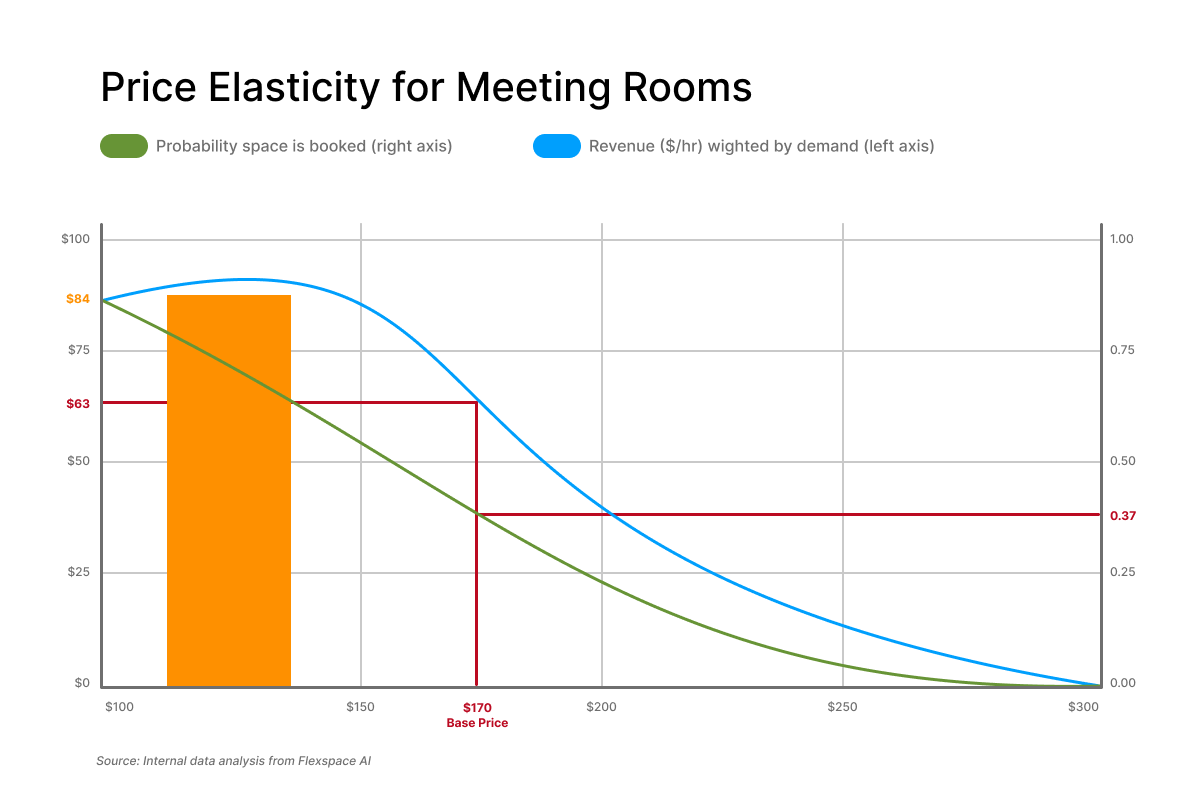Do you know the difference between real and fake dynamic pricing in coworking?
This goes beyond manual rate changes...
Spreadsheets Don’t Cut It
Many coworking operators believe they’re using dynamic pricing when they adjust their meeting room rates on a busy Tuesday or offer a discount for slow Friday.
While these adjustments show good commercial instincts, they fall short of what true dynamic pricing can achieve.
Tinkering with a spreadsheet is not a strategy; it’s a reaction.
The reality is that most of the coworking industry is confusing manual rate changes with genuine dynamic pricing, leaving significant revenue and invaluable data on the table. The hospitality and airline industries mastered this decades ago, transforming their revenue models by letting data, not guesswork, drive pricing decisions.
It’s time for the flexible workspace sector to catch up.
The opportunity is not just about increasing prices but about optimizing revenue by connecting the right customer to the right product at the right price, every single time. Let’s explore what real dynamic pricing looks like and how it can become a powerful growth engine for your business.
Lessons from hotels and airlines on real dynamic pricing
For years, airlines and hotels have used sophisticated systems to maximize revenue from perishable inventory—an empty seat or an unsold room is lost income forever. Coworking spaces face the exact same challenge. True dynamic pricing isn't about an operator manually changing rates based on a hunch. It’s about using algorithms and a constant stream of data to adjust prices automatically in response to demand, seasonality, and market conditions.
Here’s where the distinction becomes critical:
Manual rate changes are reactive, not proactive
Operators often change prices only after they notice a pattern, like consistent sell-outs on Wednesdays. By then, they’ve already missed weeks of potential revenue. A true dynamic model predicts these demand shifts before they happen and optimizes pricing in advance.Coworking demand is volatile and nonlinear
A simple rule like "increase prices by 20% on Tuesdays" doesn't work because demand is influenced by countless factors—the day of the week, time of day, local conferences, school holidays, and even the weather. Manual updates and simple rule-based systems can't possibly capture this complexity.The real value is in conversion optimization
The goal of dynamic pricing isn’t just to charge more. It’s to find the perfect price that maximizes the chances of a booking. This means you achieve higher occupancy and higher revenue without eroding your margins by over-discounting or losing customers by overpricing.
The hospitality and airline industries rely on these advanced strategies to protect customer satisfaction while maximizing yield. The flexible workspace industry is just beginning to understand and apply these proven models.
How to spot when a “dynamic pricing” tool is really just glorified manual pricing
As the concept of dynamic pricing gains traction, many tools have emerged that claim to offer it. However, a significant number of these are little more than sophisticated spreadsheets that still rely on manual input and reactive rules. You might have a system that allows you to set different prices for different days, but if it's not learning and adjusting on its own, it’s not truly dynamic.
Ask yourself these questions about your current system:
Does it adjust prices automatically based on real-time demand signals? Or does it require you or your team to manually change rates based on occupancy levels?
Does it predict future demand?
Or does it only react to past performance?Can it account for external factors like local events or conferences?
Or is it limited to internal data like day of the week?
If your "dynamic" tool still requires you to be the pricing expert,
it’s holding your business back.
You are essentially doing the work the machine should be doing. True dynamic pricing doesn't just give you more controls; it delivers intelligent, automated decisions that you don't have to think about.
What operators should expect from real AI-driven dynamic pricing
The move to AI-driven dynamic pricing unlocks opportunities that are simply invisible with manual adjustments.
These systems are not just about setting prices; they are about understanding the entire commercial ecosystem of your coworking space.
AI-powered models unlock hidden revenue.
By constantly testing price elasticity, detecting subtle booking trends, and learning from user behavior, these models find revenue opportunities that manual analysis would miss. For example, an AI might discover that a 10% discount offered 72 hours before a booking window generates more revenue than a 25% discount offered 24 hours before.Dynamic pricing is part of a larger revenue strategy.
A powerful pricing engine should integrate seamlessly with your marketing automation, customer segmentation, and upsell flows. Imagine automatically sending a targeted offer to a customer who previously booked a specific meeting room or suggesting an add-on service at the perfect moment in the booking process. This transforms pricing from a simple tactic into a comprehensive growth engine.
When you use AI-driven dynamic pricing, you’re not just buying a tool; you’re gaining a partner that continuously works to optimize your revenue. You empower your team to focus on what they do best—delivering an exceptional member experience—while the technology handles the complex task of maximizing your commercial success.
The choice for coworking space operators is becoming clear:
continue with reactive, manual pricing and hope for the best, or embrace the intelligent, automated systems that are already powering the world’s most successful industries.
The future of flexible workspace revenue depends on it.
This Thought Leadership content is brought to you by:
Learn how Flexspace AI is transforming coworking with their ecommerce revenue platform, featuring SmartPricing Agent, an AI-powered dynamic pricing engine.






